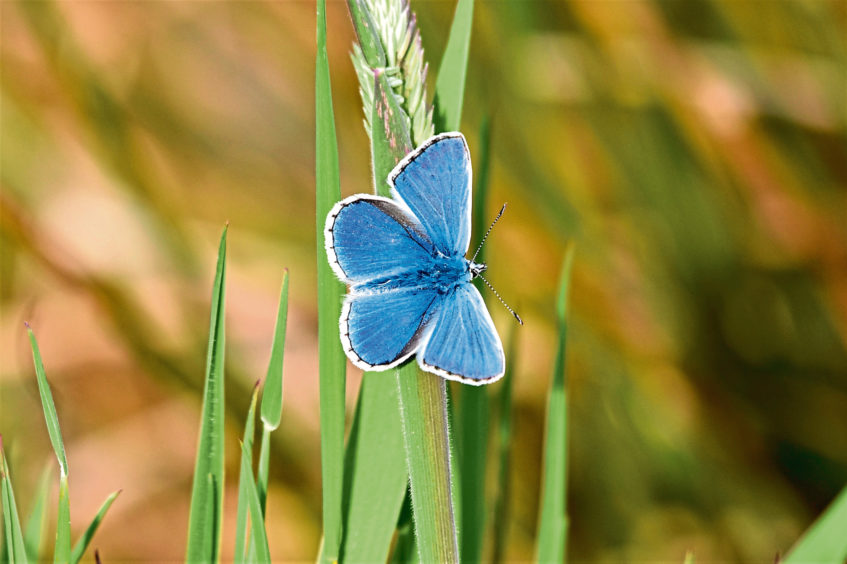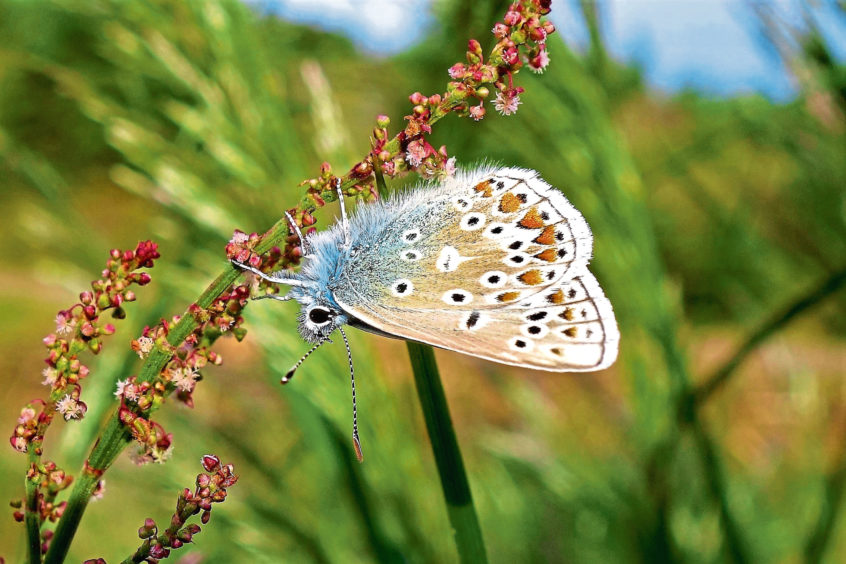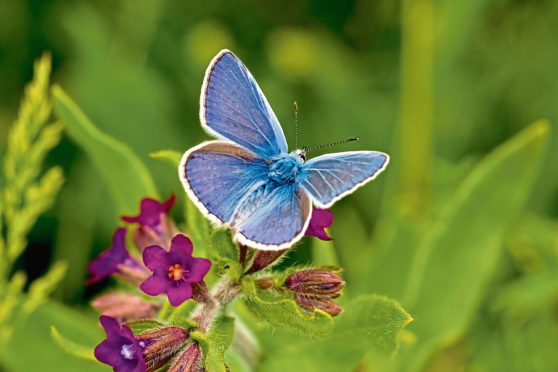I have a love/hate relationship with butterflies: I adore them for their exquisite beauty but get irritated by their propensity to take flight just as I am about to photograph one.
Such thoughts swirled through my mind as I carefully stalked a male common blue butterfly with camera in hand in a southern Perthshire glen. This wee beauty fluttered on dazzling cobalt wings before alighting on a grass stem. This was the opportunity, the moment I had been waiting for, so I crept closer, but no, up it went into the air again.
It was a warm evening, but the sun was lowering, and I knew this common blue would want to settle for the night. It fluttered down once more and landed on a sorrel plant, closing its wings. I waited for a while so that it became accustomed to the idea of resting, before slowly crawling towards it. This time the butterfly stayed put and my camera clicked happily away.

All dark thoughts about flighty butterflies were immediately swept aside, such was the spell-binding attractiveness of this common blue. With wings open, the topsides glimmer like an azure gem, and when closed and held upright over the back, they display the most exquisite patterning of blue, beige, and russet, peppered with a sprinkling of dark spots. It is natural perfection.

Despite the name, these little butterflies are far from common, and are localised in their distribution, being found where their favoured food plant, bird’s-foot trefoil, occurs. But despite this, common blues are fickle and even in areas where bird’s-foot trefoil grows in abundance, they can be completely absent. I am always intrigued by such distribution anomalies where a creature is missing from a habitat which otherwise looks ideal for them. All sorts of unseen environmental factors can be at work, but for much of the time, I suspect it just down to chance.

A fascinating aspect of common blue ecology is that their caterpillars have forged a unique relationship with ants. In this arrangement of ‘you scratch my back, and I’ll scratch yours’, the caterpillars secrete nutrient-containing substances that the ants feed upon, while at the same time, the ants protect the butterfly larvae from predators. The capacity of nature to innovate and evolve is forever a source of wonderment to me.
After taking my fill of photographs of this common blue, I hauled myself up from the ground and slowly wandered back down the glen. Meadow pipits were everywhere, their thin piping calls filling the air as the adults buzzed backwards and forwards feeding their newly fledged young.
The foraging was bountiful, with many of the parent birds having their beaks stuffed full of insects. We often overlook insects and other invertebrates, which is a pity, for they are one of the fundamental driving forces of our environment and the pillar that supports so much other life.
INFO
While not abundant, the common blue is widespread in Courier Country and found in a variety of grassy habitats from sea level to hillsides. The males are bright blue, but the females are browner.










